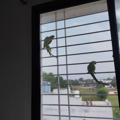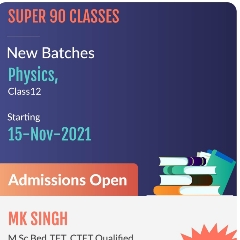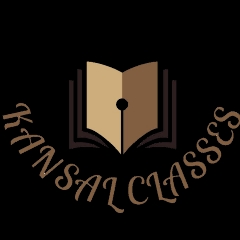Question 2 :
In the metre bridge experiment of resistances, the known and unknown resistances are inter-changed. The error so removed is:<br/>
Question 3 :
Kirchhoff's law of meshes is in accordance with law of conservation of: <br/>
Question 4 :
What is the total resistance when four resistors of $20, 40, 60$, and $80$ respectively are connected in parallel (in ohm)?
Question 6 :
A cell of emf $E$ is connected across a resistance $R$ . The potential difference between the terminals of the cell is found to be $V$ . The internal resistance of the cell is given as :
Question 7 :
By increasing the temperature, the specific resistance of a conductor and a semiconductor.
Question 8 :
The smallest resistance that can be obtained by the combination of  $n$ resistors, each of resistance  $R$ is:
Question 10 :
An electric cell does 5 joules of work in carrying 10-coulomb charge around the closed circuit. The electromotive force of the cell is :
Question 11 :
If a copper wire is stretched to make it 0.1% longer, the percentage increases in resistance will be
Question 13 :
In general, the resistance to electric current of a material; in particular, the degree to which a material resists the flow of electricity is called<br>
Question 15 :
The resistance of a semiconductor material(germanium or silicon) ________with risein temperature.
Question 16 :
Electrical power P is given by expression : $V\times x$. What is $x$?
Question 17 :
When n number identical cell of emf E and internal resistanceis connected in parallel, the net emf of the system will be <br>
Question 18 :
Two cells when connected in series are balanced on $8\ m$ on a potentiometer. If the cells are connected with polarities of one of the cell is reversed, then they balance on $2\ m$. The ratio of emf's of two cells is
Question 20 :
A (75 - j40 ) $\Omega $ load is the connected to a coaxial line of $z _ { 0 } = 75 \Omega$ The load matching on the line can be accomplished by connecting
Question 21 :
What is the equivalent resistance of three 1000 $ \\ohm $ resistors in series?<br/>
Question 22 :
Two sources of equal emf are connected to an external resistance R. The internal resistance of the two sources are $R_1$ and $R_2$ $(R_2 > R_1)$. If the potential difference across the source having internal resistance $R_2$ is zero, then.
Question 24 :
The resistivity of a potentiometer wire is $40 \times {10^{-8}}ohm - m$ and its area of cross section is $8 \times {10^{ - 6}}{m^2}$. If a current of $0.2A$ is flowing through the wire, then the potential gradient will be
Question 25 :
If five equal pieces of $25\Omega$ are connected in parallel, then their equivalent resistance will be............
Question 26 :
If the temperature of a conductor is increased, its resistance will
Question 27 :
The temperature coefficient of resistance of a wire is $0.00125$ per degree celcius. At $300K$ its resistance is $1$ ohm.The resistance of the wire will be $2$ ohm at following temperature :-<br>
Question 28 :
When Cu and Ge are cooled to $-150^oC$ then resistance of Cu .... and that of Ge ....<br>
Question 29 :
In a potentiometer experiment the balancing with a cell is at length $240$ cm. On shunting the cell with a resistance of $2\Omega$ the balancing length becomes $120$cm. The internal resistance of the cell is?
Question 30 :
The resistance of a voltmeter is 100 $\Omega $. It is connected to a 12V-20W battery. The reading of voltmeter is (Nearly)<br/>
Question 31 :
Potentiometer wire of length 1 m is connected in series with 490 $\Omega$ resistance and 2 V battery. If 0.2 mV/cm is the potential gradient, the resistance of the potentiometer wire is<br>
Question 33 :
Which device is used to measure the potential difference between two points of a conductor in the laboratory?
Question 34 :
A battery of emf $10 V$ and internal resistance $3$ is connected to a resistor. The current in the circuit is $0.5 A$. The terminal voltage of the battery when the circuit is closed is<br/>
Question 35 :
Two electric bulbs whose resistance are in the ratio of $1 : 2$ are connected in parallel to a constant voltage source. The ratio of the power dissipated in them will be:
Question 36 :
In metre bridge experiment, with a standard resistance in the right gap and a resistance coil dipped in water (in a beaker) in the left gap, the balancing length obtained is 'l'. If the temperature of water is increased, the new balancing length is
Question 37 :
The mobility of electrons in a semiconductor is defined as the ratio of their drift velocity to the applied electric field. If, for an n-type semiconductor, the density of electrons is $10^{19}m^{-3}$ and their mobility is $1.6 m^2/(V.s)$ then the resistivity of the semiconductor (since it is an n-type semiconductor contribution of holes is ignored) is close to:
Question 38 :
Formula of internal resistance of primary cell in the form of balancing length is $\left \{l_{1} and l_{2} \text {are the balancing lengths in open and closed circuit respectively}\right \}$.
Question 39 :
The terminal potential difference of a cell is equal to the emf of the cell when:
Question 40 :
Two bulbs of $100 W$ and $200 W$ working at $220$ volt are joined in series with 220 volt supply. Total power consumed wll be approximately.
Question 41 :
Two cells of same emf are connected in series. Their internal resistances are $r_1$ and $r_2$ respectively and $r_1 > r_2$. When this combination is connected to an external resistance R then the potential difference between the terminals of first cell becomes zero. In this condition the value of R will bw<br>
Question 43 :
If masses of three wires of copper are in the ratio of 1 : 3 : 5 and there lengths are in the ratio of 5 : 3 : 1, then ratio of their electrical resistance is
Question 44 :
A current passes through an ohmic conductor of nonuniform cross section. Which is the following quantities are independent of the cross-section?
Question 45 :
A cell of e.m.f. $\varepsilon$ and internal resistance $r$ sends current $1.0 A$ when it is connected to an external resistance $1.9\, \Omega$. But it sends current $0.5 A$ when it is connected to an external resistance $3.9\, \Omega$. Calculate the values of $\varepsilon$ and $r$.
Question 46 :
A potentiometer wire has a length 2 m and resistance of 10$\Omega $. It is connected in series with a Resistance of 990$\Omega $ and a cell of e.m.f. 2V. The potential gradient along the wire is
Question 47 :
Assertion: The temperature coefficient of resistance is positive for metals and negative for $p-$ type semiconductor.
Reason: The effective charge carriers in metals are negatively charged whereas in $p-$ type semiconductor they are positively charged.
Question 48 :
Two wires of resistances 10 $\Omega$ and 5 $\Omega$ are connected in series. The effective resistances is _______ $\Omega$
Question 49 :
Two identical cells, each of emf $E$ and internal resistance $r$, when connected in series or parallel across a resistance $R$ are found to give the same current through $R$. In this case
Question 50 :
Twelve cells, each having an e.m.f of  E volt are connected in series and are kept in a closed box. Some of these cells are wrongly connected with positive and negative terminals reversed. This 12 cell battery is connected in series with an ammeter, an external resistance R ohms and a two-cell battery (two cells of the same type used earlier, connected perfectly in series). The current in the circuit when the 12-cell battery and 2-cell battery aid each other is 3A and is 2A when they oppose each other. Then the number of cells in 12-cells battery that are connected wrongly is:<br/>























